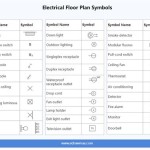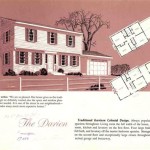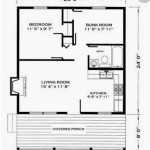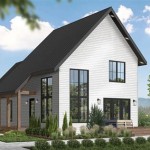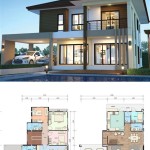Gourmet Kitchen Home Plans: Designing for Culinary Excellence
Gourmet kitchen home plans represent a significant investment in both functionality and aesthetics. They move beyond the basic requirements of food preparation to create a space that caters to advanced culinary pursuits, entertaining, and a sophisticated lifestyle. The design process requires careful consideration of layout, appliances, materials, and the overall flow of the space to ensure it meets the specific needs and preferences of the homeowner. A well-designed gourmet kitchen is not merely a place to cook; it is a central hub for creativity, social interaction, and personal expression.
The scope of a gourmet kitchen home plan encompasses several key elements, including spacious countertops, high-end appliances, ample storage, and specialized workstations. The integration of these elements demands a comprehensive understanding of architectural principles and culinary practices. Furthermore, the plan must address practical considerations such as ventilation, lighting, and accessibility to ensure a comfortable and efficient workspace.
Optimizing Kitchen Layout for Functionality and Flow
Layout is paramount in gourmet kitchen design. It determines the efficiency of movement, the accessibility of appliances and ingredients, and the overall user experience. Common layouts include the U-shaped, L-shaped, island, and peninsula designs, each offering distinct advantages depending on the available space and cooking style. The “work triangle” principle, which emphasizes the efficient relationship between the sink, refrigerator, and cooktop, remains a foundational concept, although it can be adapted to incorporate multiple cooks and specialized stations.
The U-shaped layout provides ample counter space and storage, making it ideal for larger kitchens and multiple cooks. It allows for a dedicated workstation on each leg of the U, minimizing the need to cross the kitchen during food preparation. The L-shaped layout is well-suited for smaller to medium-sized kitchens, offering a balance of counter space and open floor space. An island can be added to an L-shaped kitchen to provide additional workspace, seating, and storage. The island layout is a popular choice for gourmet kitchens as it provides a central hub for preparation, serving, and socializing. It can incorporate a secondary sink, a cooktop, or a breakfast bar, further enhancing its functionality. The peninsula layout, similar to the island layout, extends from one wall, creating a partial barrier between the kitchen and another room. This layout is effective in defining the kitchen space within an open floor plan while providing additional counter space and seating.
Regardless of the chosen layout, ample clearance between workstations is essential. At least 42 inches of clearance is recommended between countertops and islands to allow for comfortable movement. Consideration should also be given to the placement of appliances, ensuring they are easily accessible and do not obstruct the flow of traffic. For example, placing the refrigerator near the entrance of the kitchen and the dishwasher near the sink can streamline the workflow and minimize unnecessary steps.
Beyond the work triangle, gourmet kitchens often incorporate specialized zones for specific tasks. These zones might include a baking station with dedicated storage for baking supplies, a beverage center with a wine refrigerator and coffee maker, or a prep sink for cleaning vegetables. The integration of these zones enhances the functionality of the kitchen and caters to the specific needs and preferences of the homeowner.
Selecting High-End Appliances and Fixtures
The selection of appliances is a critical aspect of gourmet kitchen home plans. High-end appliances not only enhance the cooking experience but also contribute to the overall aesthetic of the kitchen. These appliances typically offer advanced features, superior performance, and greater durability compared to standard models. Common appliances found in gourmet kitchens include professional-grade ranges, convection ovens, warming drawers, integrated refrigerators, and high-powered ventilation systems.
Professional-grade ranges offer precise temperature control and high BTU output, allowing for a wider range of cooking techniques. Convection ovens distribute heat evenly, resulting in more consistent baking and roasting. Warming drawers keep food warm without drying it out, making them ideal for entertaining. Integrated refrigerators seamlessly blend into the cabinetry, creating a sleek and unified look. High-powered ventilation systems are essential for removing smoke, odors, and grease from the kitchen, ensuring a clean and comfortable cooking environment.
Beyond the major appliances, other fixtures and fittings contribute to the functionality and aesthetic of the gourmet kitchen. These include high-quality faucets, sinks, and lighting fixtures. Touchless faucets can improve hygiene and convenience, while deep, spacious sinks facilitate washing large pots and pans. Under-cabinet lighting illuminates countertops, providing task lighting for food preparation. Pendant lighting above the island adds ambiance and visual interest. The choice of materials for countertops, backsplashes, and cabinets also plays a crucial role in the overall design. Natural stone, quartz, and stainless steel are popular choices for countertops due to their durability and aesthetic appeal. Glass tile, ceramic tile, and natural stone are common materials for backsplashes, adding texture and color to the kitchen. Custom cabinets, made from high-quality wood or other durable materials, provide ample storage and contribute to the overall aesthetic of the kitchen.
Smart appliances, such as refrigerators with built-in screens and ovens that can be controlled remotely, are increasingly popular in gourmet kitchens. These appliances offer convenience and connectivity, allowing homeowners to monitor and control their cooking from anywhere. The integration of smart technology can enhance the overall cooking experience and simplify kitchen management.
Prioritizing Storage and Ergonomics
Ample storage is essential in a gourmet kitchen. The design must accommodate a wide range of cooking equipment, utensils, and ingredients while maintaining a clutter-free and organized workspace. A combination of drawers, cabinets, and pantry spaces is typically used to maximize storage capacity. Innovative storage solutions, such as pull-out shelves, spice racks, and utensil organizers, can improve accessibility and efficiency.
Drawers are ideal for storing pots, pans, and other heavy items, as they provide easy access and prevent items from being buried in the back of cabinets. Cabinets can be used to store dishes, glassware, and other less frequently used items. A walk-in pantry or a well-organized pantry cabinet provides ample storage for dry goods, canned goods, and other non-perishable items. Adjustable shelves allow for customization and accommodate items of varying sizes.
Ergonomics is another important consideration in gourmet kitchen design. The height of countertops, the placement of appliances, and the reachability of storage areas should be carefully considered to minimize strain and fatigue. Countertops should be at a comfortable height for food preparation, typically around 36 inches. Taller individuals may prefer higher countertops, while shorter individuals may require lower countertops. Appliances should be placed at a convenient height to prevent bending or reaching. For example, the microwave should be placed at eye level, and the oven should be placed at a height that allows for easy access to the racks.
Accessibility is also an important consideration, especially for homeowners with mobility limitations. Wide aisles, roll-under sinks, and adjustable-height countertops can improve accessibility and make the kitchen more user-friendly for everyone. Universal design principles should be incorporated into the kitchen plan to ensure that the space is accessible to people of all ages and abilities.
Proper lighting is crucial for both safety and aesthetics. A combination of ambient, task, and accent lighting should be used to create a well-lit and inviting space. Ambient lighting provides overall illumination, while task lighting illuminates specific work areas, such as countertops and cooktops. Accent lighting highlights architectural features and adds visual interest. Dimmable lighting allows for customization and creates a variety of moods.
In summary, gourmet kitchen home plans require careful consideration of layout, appliances, materials, and ergonomics. The goal is to create a space that is both functional and beautiful, catering to the specific needs and preferences of the homeowner. By prioritizing efficiency, storage, and accessibility, a well-designed gourmet kitchen can become the heart of the home, a place where culinary creativity flourishes and memories are made.

Chef Ready Gourmet Kitchen Plans Dfd House Blog

Four Bedroom Craftsman House Plan 9660

Gourmet Kitchen With Oversized Island 23193jd Architectural Designs House Plans

Chef Ready Gourmet Kitchen Plans Dfd House Blog

Today S Gourmet Kitchen Design Plan Ideas Cad Pro

Create Your Dream Home Kitchen Design The House Designers

Creating A Gourmet Kitchen

Creating A Gourmet Kitchen

Create Your Dream Home Kitchen Design The House Designers

Craftsman Estate Home Plan With 3 Bedrooms And Gourmet Kitchen Style House Plans Floor

